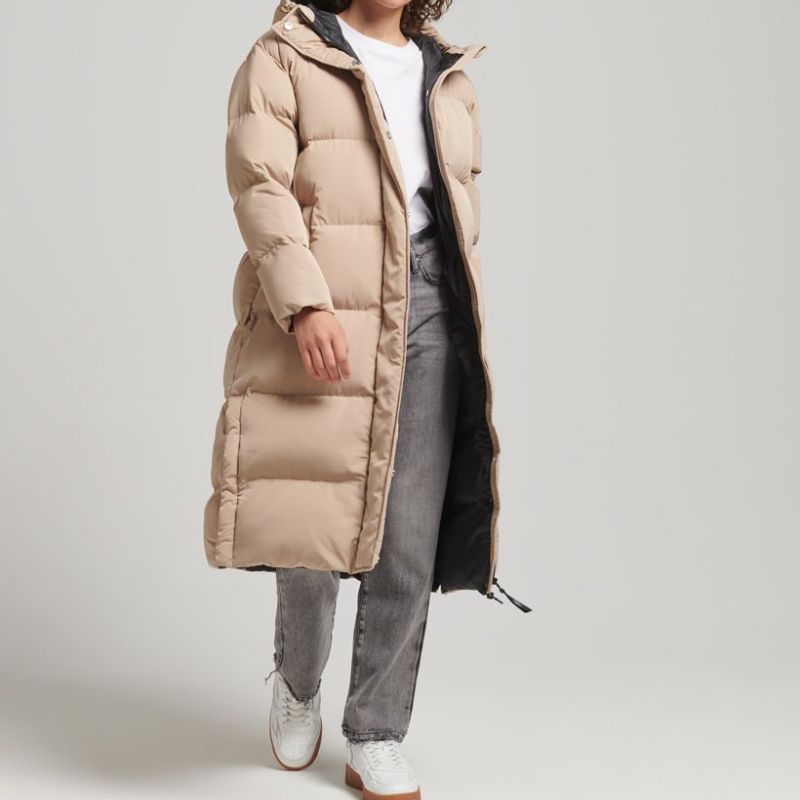How to pick a warm winter coat: what to know before you buy
These are the top things to consider when buying a warm winter coat, according to fashion experts
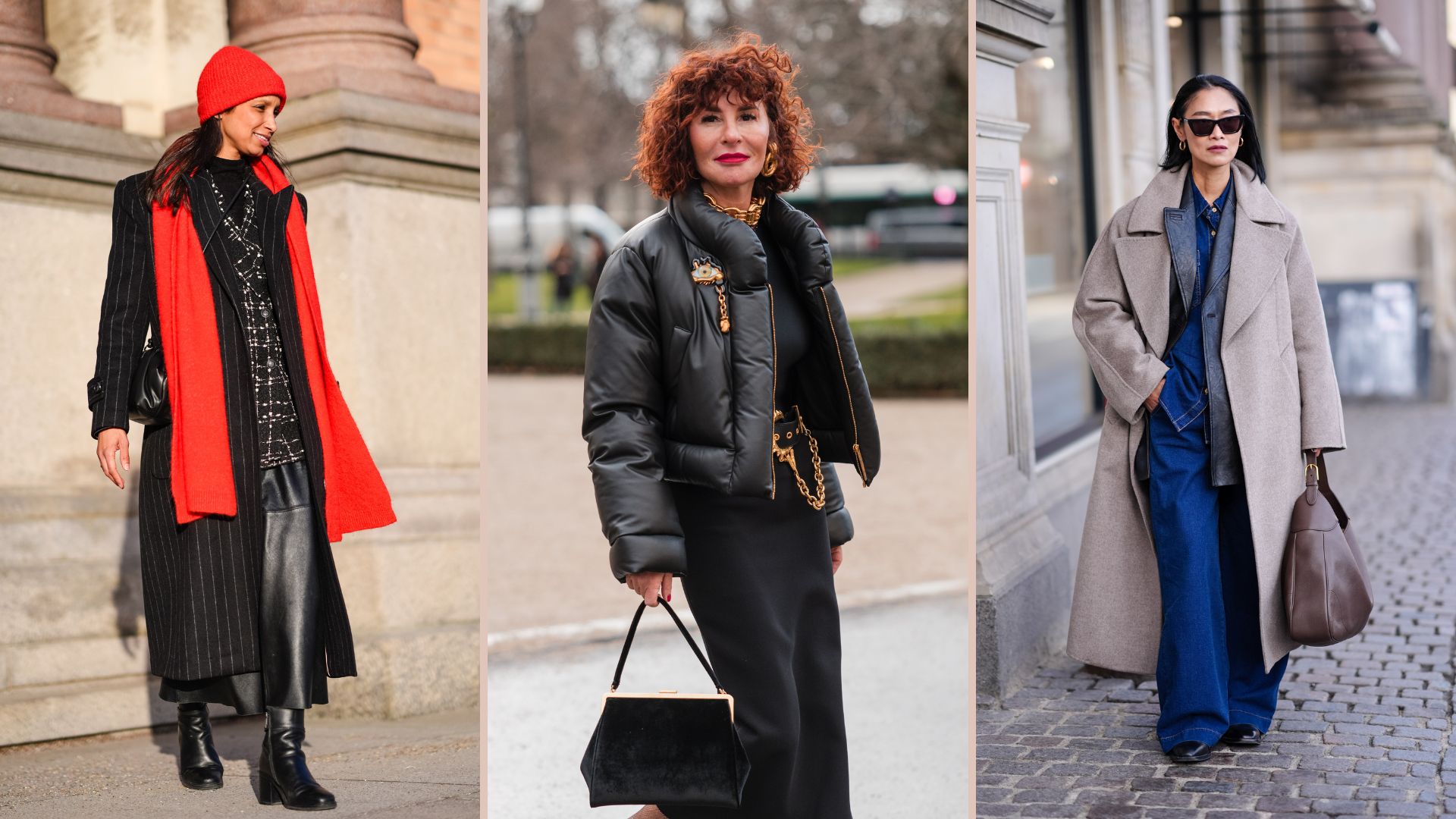
We’ve all been tricked by fashion before. Heels that seem comfortable. Shapewear that appears breathable. But the worst offenders? Coats that look warm. If you're wondering how to pick a warm winter coat that can actually stand up against the elements, there are a few crucial things to know before you hit checkout.
Picking the best winter coats is a very personal thing. Whether you're a sucker for the best parkas for women, can't live without your North Face puffer jacket, or love trying the latest coat trends, most of us can agree that they need to keep us dry and at a toasty temperature. Sadly, that’s not a given if you choose the wrong fabrics.
Consider the main purpose you want your winter coat to serve before you start shopping, and learn which materials and styles cater to those needs. To make the process simple, we’ve produced a handy guide to help you spot the warmest and most practical styles among the many duds out there…
How to pick a warm winter coat and the pieces to shop now
Warm winter coats usually fall into three categories: down, fabric and waterproof. Each have their pros and cons, and one will certainly work better for you and your capsule wardrobe than the others. Here's what you need to know.
Down coats
Down coats are the go-to coat choice for people who feel the chill. If you are constantly wrapping up in your best thermals for women and warmest leggings, this is the warm winter coat to go for.
Taking notes from nature, a down jacket uses the fuzzy under-feathers of ducks or geese to create impressive insulation. Tiny pockets of warm air are trapped between the fluff, retaining heat. The fluffier the feathers, the more air pockets the down will create, giving you maximum warmth with minimal bulk.
When shopping for down coats or jackets, you might notice they feature a “fill power” rating. The higher the fill power rating, the cosier your new purchase will be. The numbers vary from 400 for medium warmth, all the way up to a super snuggly 900.
Sign up to our free daily email for the latest royal and entertainment news, interesting opinion, expert advice on styling and beauty trends, and no-nonsense guides to the health and wellness questions you want answered.
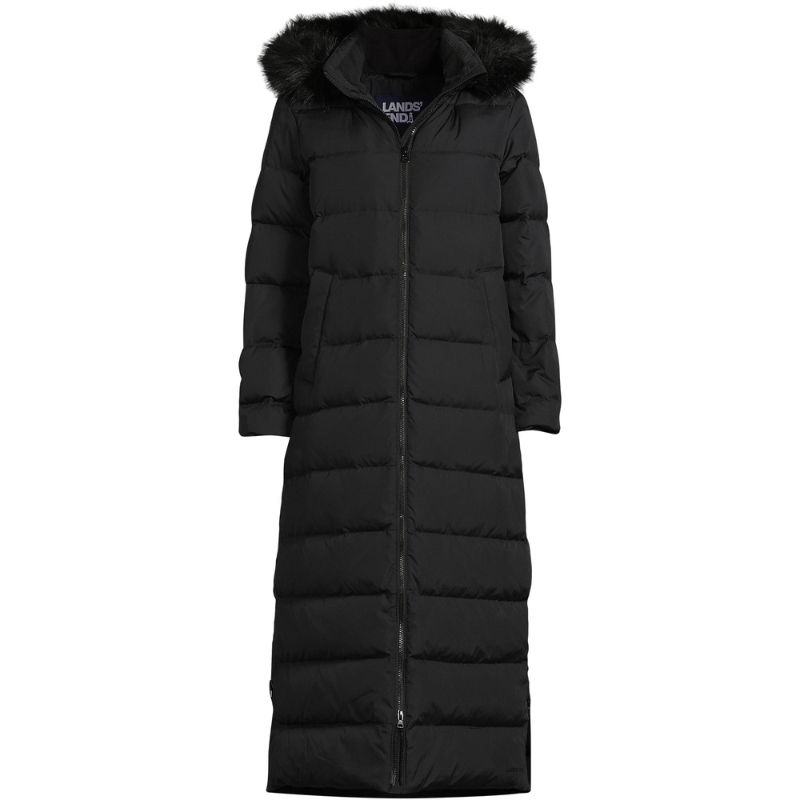
RRP: £230 | A winter capsule wardrobe staple that will never date, this is one of the best puffer coats for everyday wear. Made with 600-fill power down insulation and in a maxi length, it is one of the warmest winter coats on the market.
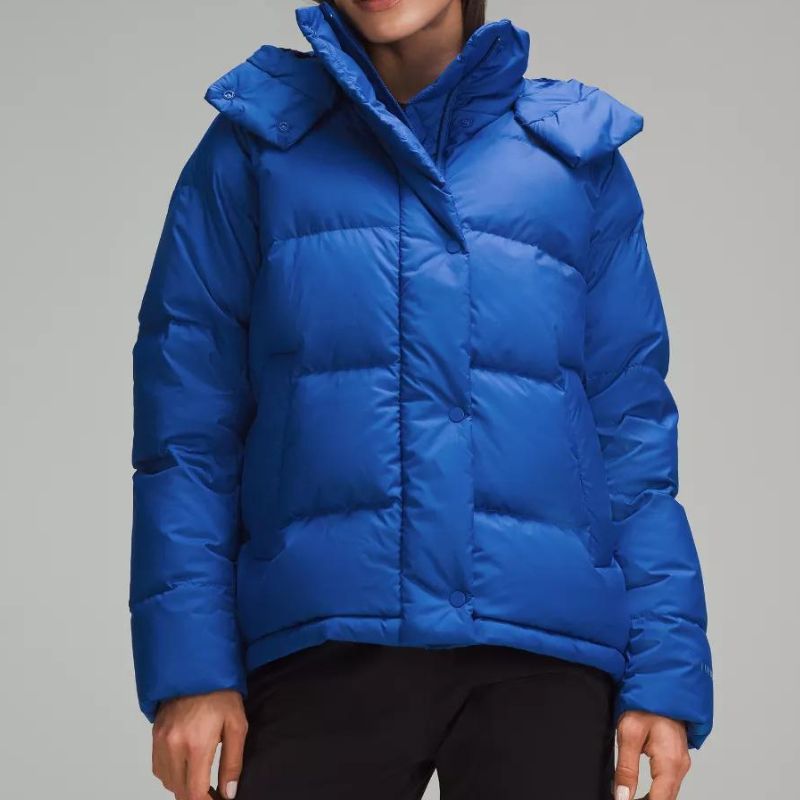
RRP: £248 | This electric blue hue proves that practical down coats don't have to be boring. A brilliant example of how to channel dopamine dressing or liven up your wardrobe for what to wear skiing, it offers style and cosiness.
Fabric coats
Regardless of its composition or style, fabric will have the biggest impact on how comfortable your coat is to wear. You not only want a fabric that will keep you warm, but one that will move moisture away from your body for a cool and comfortable experience.
"When it comes to picking a warm winter coat, I'm all about the fabrication. For a smart, tailored look, coats with wool or cashmere (or a combination of both) means I can guarantee great temperature regulation without even leaving the shop floor," says our fashion editor Rivkie Baum.
The best cashmere jumper is a true wardrobe hero that is worth the slightly steeper price tag if you want both toastiness and breathability, so you can be sure that a cashmere coat will provide the same premium feeling. If you have a slightly smaller budget, wool is the best alternative.
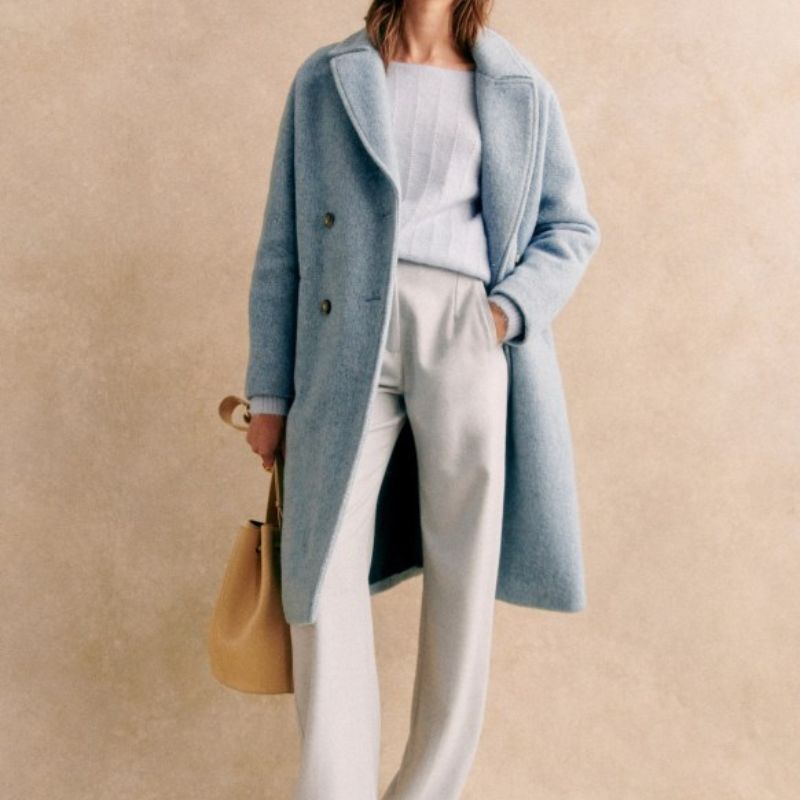
RRP: £350 | Made from 100% wool, this beautiful sky blue midi coat ticks every box. One of the most essential types of coats for everyone to own, it can be thrown over the most comfortable of ensembles for extra warmth and a polished finish that is more affordable than a Burberry trench coat.
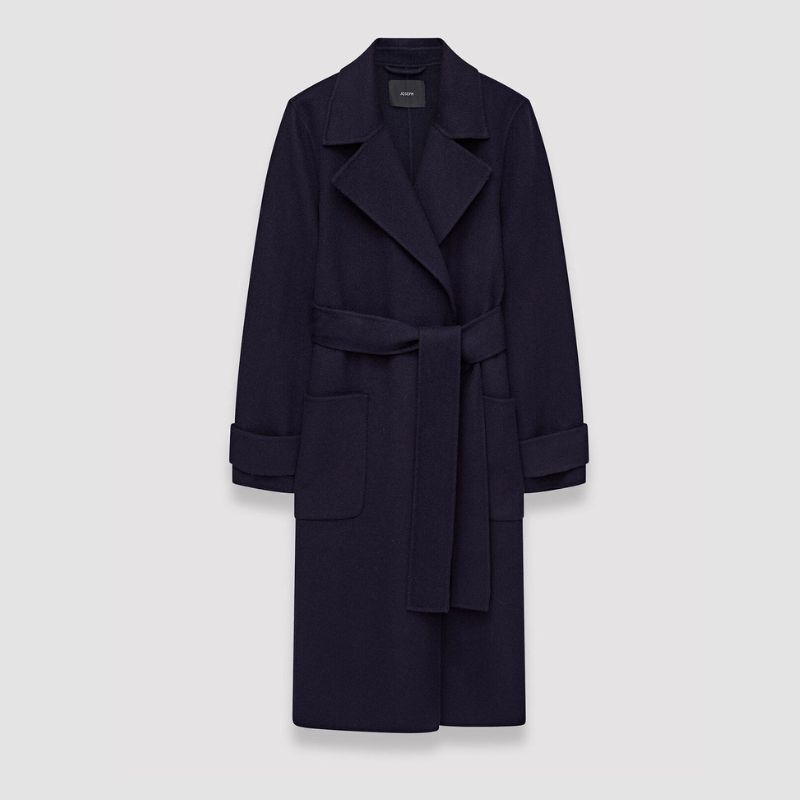
RRP: £1195 | Not only is cashmere deliciously soft, but as it comes from the downy undercoat of goats, it’s a great insulatulator too. High percentages of cashmere normally come with eye-watering price tags, so if you can’t stretch that far, look at Reiss coats or cashmere-and-wool-blends like this one.
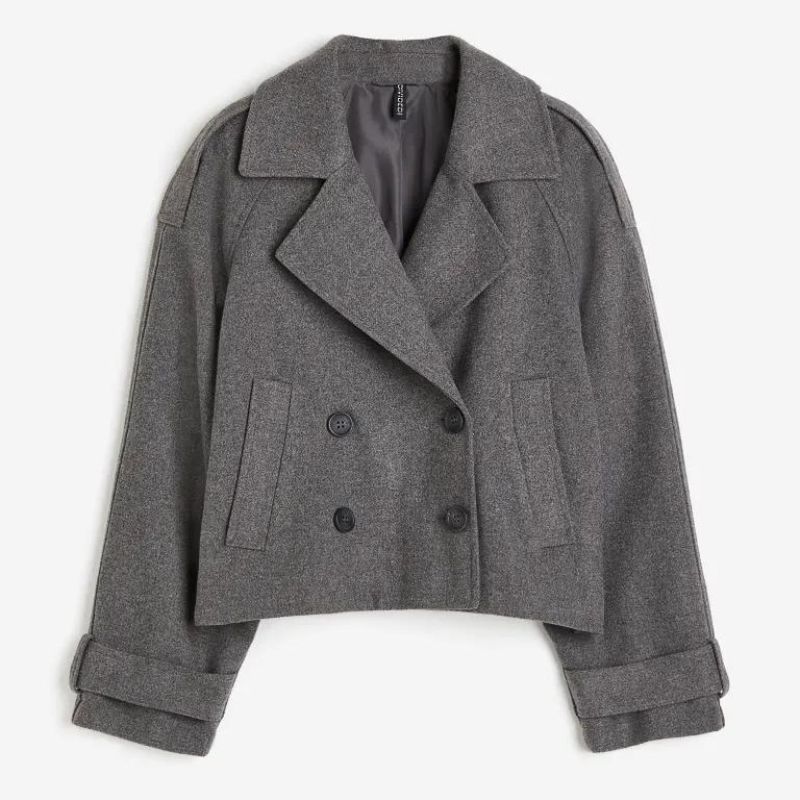
RRP: £39.99 | Synthetic coats are much cheaper than wool and cashmere but can still offer warmth. Polyester coats like this tend to be cheaper and lighter than their nylon cousins. What they lack in durability they make up for in moisture-wicking, effectively drawing sweat away from your body to keep you dry.
Waterproof coats
The risk of rain looms heavy over most outdoor activities from autumn through spring, so one of the best waterproof jackets for women is non-negotiable. From short showers through to torrential downpours, a waterproof coat will help to keep you warm and dry.
It’s worth noting that not all waterproof coats are created equal, so read the small print before purchasing. 'Showerproof' will shield you from short downpours, but not unrelenting rain. 'Water-repellent' pieces have been treated with a special coating to stop them from absorbing moisture, but can let in water through gaps in the seams during sustained showers.
For maximum dryness, look for a fully waterproof coat featuring a water-repellent coating, closed seams, and a breathable lining that will help keep you cool without letting water in. Fast-drying fabrics are important, too, stopping your rain-soaked coat from becoming heavy and cumbersome.
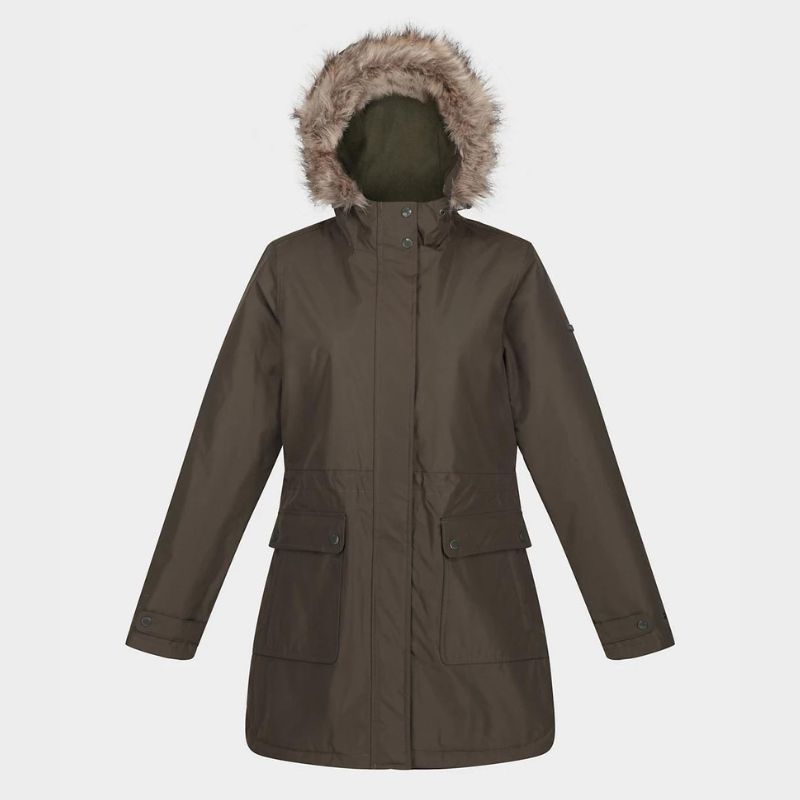
RRP: £84 | Marks & Spencer coats are some of the most practical on the high street and they stock a range of great brands too. This thick, waterproof parka comes in multiple hues and can be trusted to keep rain and wind out all winter.
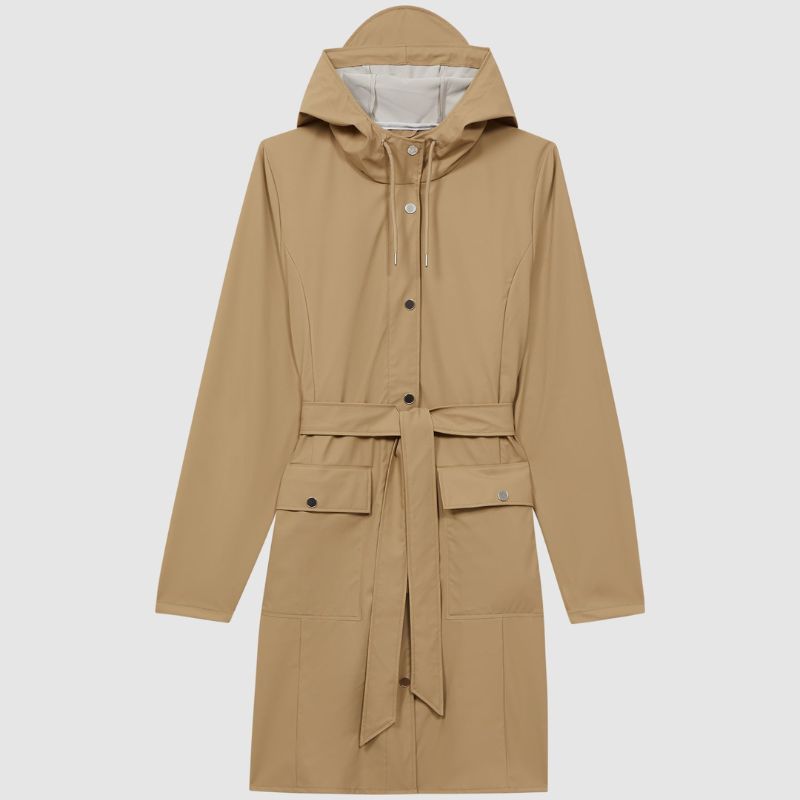
RRP: £105 | The best trench coats for women are perfect for showers and transitional weather. By keeping you dry, this jacket will also prevent you from getting too cold. Layer with the best oversized jumpers for a little extra padding.
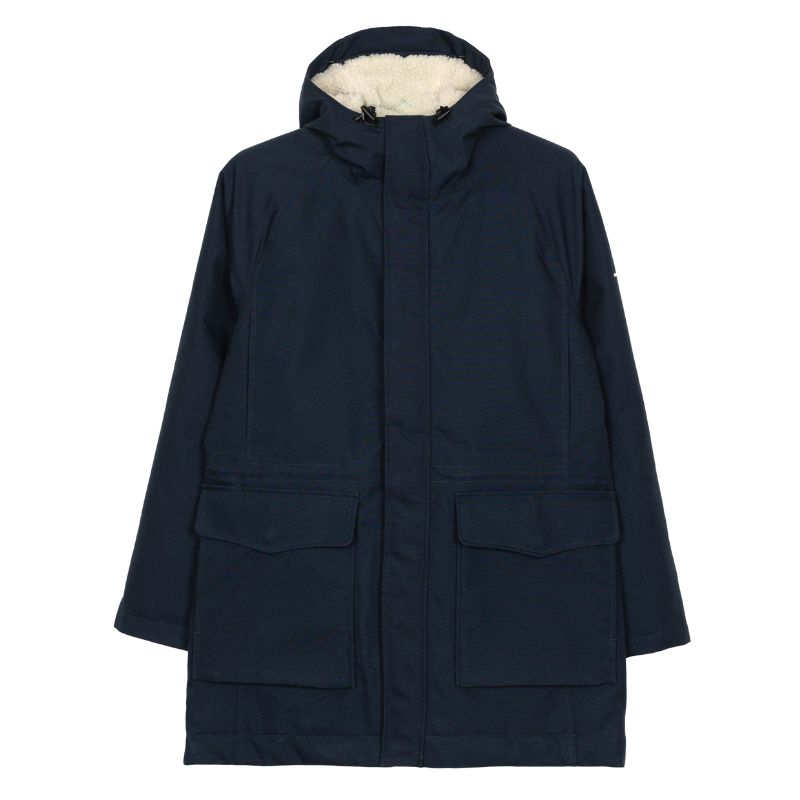
RRP: £395 | Cosy and waterproof, this sleek parka is filled with down-free recycled insulation that is built to stand up against all weathers. With a handy drawstring waist that will add shape to your look, there are no conditions this warm winter coat won't work for - easily one of the best parka coats for women.
Is a wool or puffer coat warmer?
"For something ultimately more practical for everyday, I'm a big fan of a puffer jacket, or quilted design, packed with insulating down to ensure a toasty wear," says Baum. As some of the thickest coats you can buy, puffers tend to be warmer than other coats, especially if they are made from down.
Another thing to be aware of is the materials that are actually in your 'wool' outerwear. "It is important to look for a 100% wool coat. Many 'wool' coats are actually made from synthetic fibers such as nylon and polyester. Synthetic fibers may look like wool but they do not behave the same as wool when it comes to temperature regulation," says Liz Williams, Outerwear Designer at The Checkroom. If you find that fabric coats you expect to be warm aren't keeping the heat in, this is probably why.
How to pick the right length winter coat
Not sure which length to opt for? It all depends on what you’re up to. Generally, if you’re planning to wear your winter coat for activities like skiing or hiking, or even just a lot of walking, a cropped number will keep you snug without restricting your movement.
However, if you’ll be wearing your new purchase on leisurely errands or will be standing still in it for long periods of time, it makes sense to max out on length with a longer-line style to the mid-thigh or beyond.
Extra design details that make a big difference on winter coats
Sometimes it’s the little things that make the biggest difference when it comes to warmth and this sentiment definitely applies to winter coats. Look out for:
- Stretchy, closed cuffs and adjustable drawstring hoods or hemlines that will help to trap the warm air inside your new buy.
- Closed seams - important for keeping both rainwater and whipping winds out.
- Lining - "right now many wool and cashmere coats are unlined. Unlined coats can be fine for moderate temperatures, but a lined coat is going to ultimately provide you with more warmth and comfort," says Williams.
Why the care instructions can affect how warm your winter coat is
So you've learnt how to pick a warm winter coat - now how can you keep feeling and looking as good as new? How you wash your winter coat can affect its performance and heat-keeping abilities. Follow the care labels to the letter to avoid shortening its life span. Speedy spin cycles can damage delicate down, while fabric softener wreaks havoc with waterproof coatings.
Our experts:
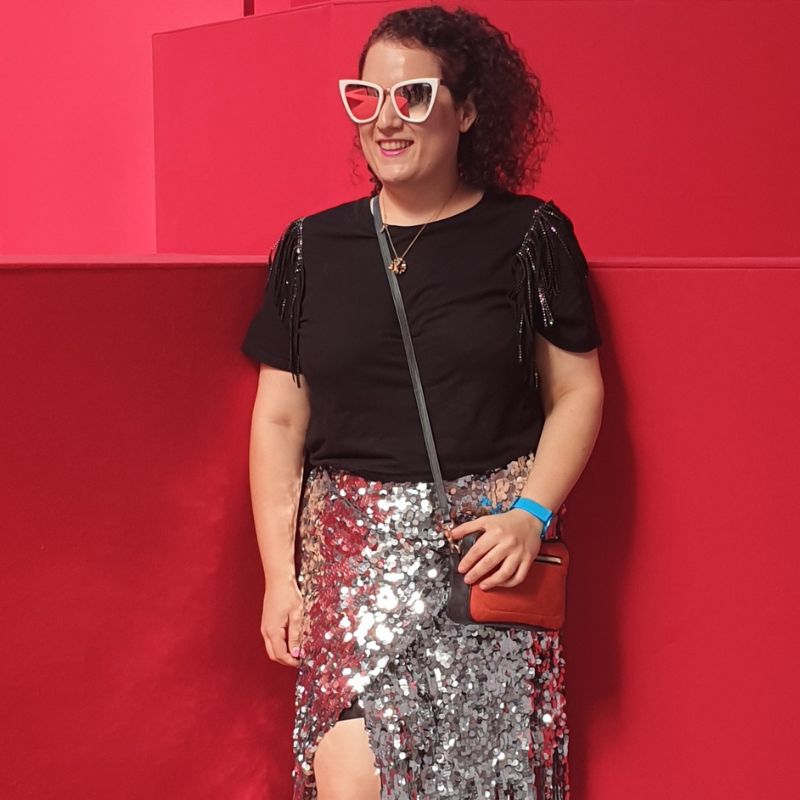
With over fifteen years' experience, Rivkie is an accomplished fashion editor, writer and stylist. Covering international fashion weeks, and styling photoshoots all over the world, Rivkie loves translating the trends in an accessible way to make fashion available for all budgets.

Outerwear Designer at The Checkroom, Liz Williams creates “Classic Inspired Statement Coats for Modern Women.” Liz is a former Instructor of Fashion Design at Columbia College in Chicago, where she educated students in fashion design, patternmaking, sewing, and fabric manipulation.
Jess Beech is an experienced fashion and beauty editor, with more than eight years experience in the publishing industry. She has written for woman&home, GoodtoKnow, Now, Woman, Woman’s Weekly, Woman’s Own and Chat, and is a former Deputy Fashion & Beauty Editor at Future PLC. A beauty obsessive, Jess has tried everything from cryotherapy to chemical peels (minus the Samantha in Sex and The City-worthy redness) and interviewed experts including Jo Malone and Trinny Woodall.


